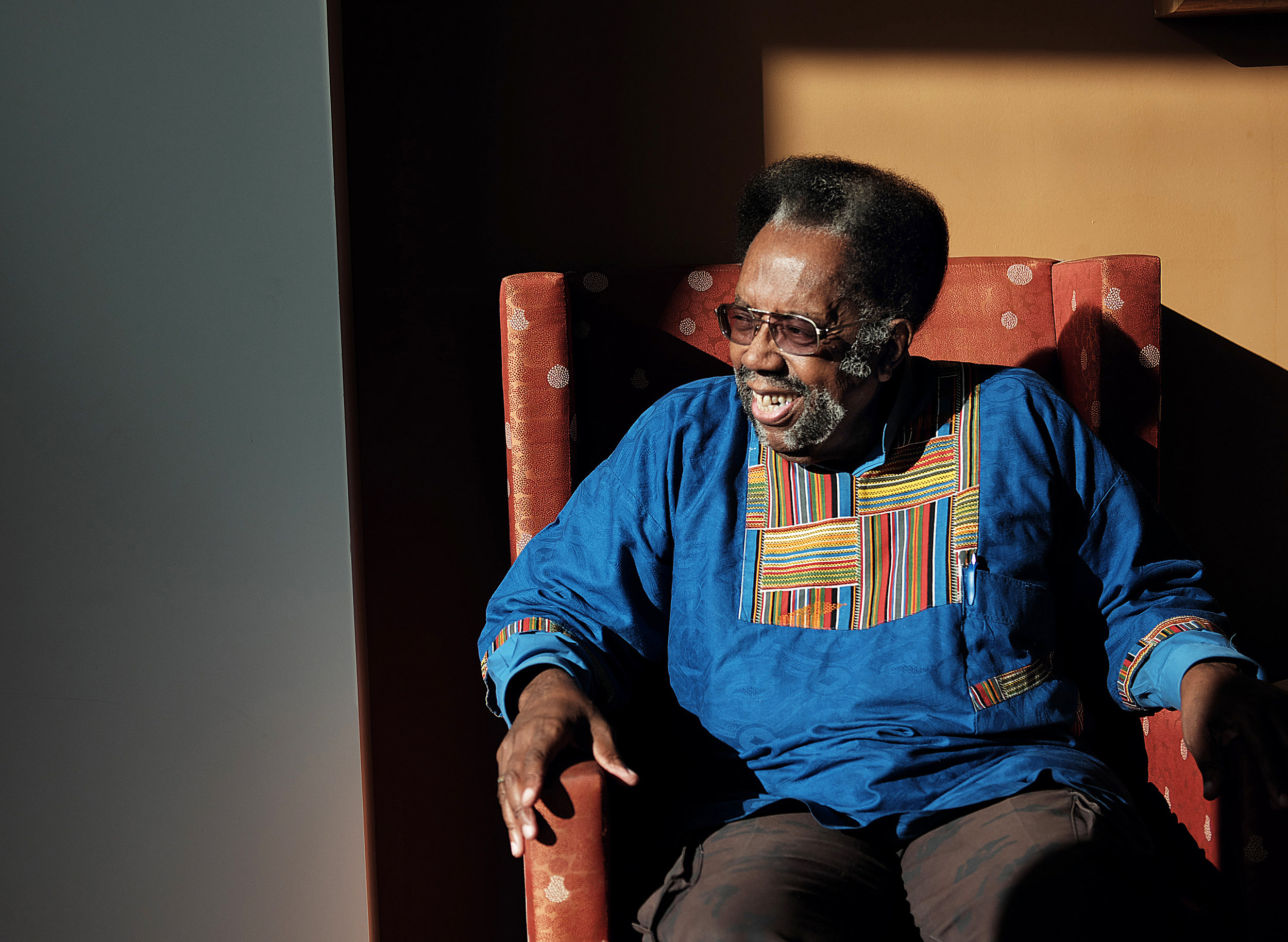Aging in place (Part 1): seniors search for housing in a difficult market
Leon Wallace feels lucky to have found affordable housing at St. Anne's Senior Community. Photo by David Pierini
By Kenzie O'Keefe | Editor
Additional reporting by Myesha Powell
Leon Wallace, 76, has been a Northside community member for decades. For the past ten years, he’s found it more and more of a struggle to live here comfortably.
For most of his adult life, Wallace was professionally successful and self-sufficient. Then, the 2008 recession hit and the longtime realtor lost his business and much of his retirement savings. The stress led to a divorce from his wife and he had to leave the home he owned. Soon after, he was diagnosed with prostate cancer. “Everything was going downhill,” he said.
When Wallace recovered, he found himself needing to build a life that cost less than his only source of income: his $1200 per month Social Security check. “Thank God I put that money aside, or I’d be up a creek without a paddle,” he said.
Stories like Wallace’s are common among seniors on the Northside and throughout Minneapolis.
The elderly are among those being hit hardest by our city’s affordable housing crisis. Many lost homes, savings, and jobs during the recession and foreclosure crisis. Rising rents and increasing property taxes on fixed incomes are squeezing elders out of homes and neighborhoods they’ve known their entire lives. Though some, like Florence Timmerman and her sister Jessie Johnson (see story Page 22), have been able to live independently into their golden years, most need levels of affordability, physical accessibility, and community that can feel nearly impossible to find in Minneapolis’ current housing market. Many are making do with less than what they need to live comfortably.
“It’s inhumane for a wealthy country like this, where seniors who have worked all their lives [are being] told ‘we don’t have housing for you,’” said Wallace.
_____
Wallace ended up moving into a $560 per month efficiency apartment at St. Anne’s Senior Community, a CommonBond Properties development at 2323 26th Ave. N. He describes it as “the most affordable building outside of public housing in North Minneapolis.” He says security concerns keep him from living in public housing, which would cost him less – just 30% of his monthly income.
Steve Tibbetts, 67, lives in a duplex with his dog Baylor. He says he doesn’t want to live in a senior living community. “When you live in a homogenous community, you begin to pick up the aches and pains. We create an aging thing. I just don’t think it’s for me.” Photo by Kenzie O'Keefe
According to its website, St. Anne’s doesn’t allow pets. Public housing high rises allow one dog or cat weighing no more than 25 pounds or two caged small pets or one aquarium of thirty gallons or less for fish only.
For seniors like Steve Tibbetts, this is a no-go. Living with a dog is a necessity for him. Tibbetts rents a duplex unit on the 4100 block of Aldrich Ave. N with his medium-sized dog Baylor. He’s deeply grateful for his landlord who allows him to have Baylor. “The company for me is unbelievable. It makes a whole other life for me,” he said.
Tibbetts, 67, says he had a successful career as a psychologist, a mortician, and a handyman until the recession. Then, like Wallace, he says he lost his retirement savings and his home, and then he experienced a series of heart attacks that burdened him with medical debt and an inability to work as much as he used to. “I was a PhD psychologist. People paid attention to me. Then I got sick, almost died, and everybody went away,” he said.
After a period of homelessness, his friend, John Richards, another Northside resident, helped him find his duplex unit and vouched for him to the landlord despite his bad credit. Tibbetts feels fortunate to have found his $800 per month unit, but says he worries constantly about rent being raised. “I watch every penny. I don’t go anywhere. I seldom eat out,” he said.
Mary Richards, 71, is a resident of Victory Health and Rehabilitation Center, a nursing home in Lind Bohanon. “I realized that I can’t quite take care of myself," she said. Though she says it's not a perfect living situation, she appreciates the center's activities department. Photo by Kenzie O'Keefe
Tibbetts isn’t the only senior who Richards looks out for. His mother Mary Richards, 71, is a resident of Victory Health and Rehabilitation Center, a nursing home in Lind Bohanon. Finding adequate housing for her has been difficult. Before she lived at Victory, she lived at a different nursing home in Crystal, MN. In both places, Richards and his mother say there have been problems – cold food, locked doors, critical health issues ignored, and some security concerns.
“In our family we really believe in the dignity of our elders. That’s how [my mother] raised us. Watching people treat her like she’s an object in a room is so frustrating,” Richards said.
For now, his mother plans to stay at Victory, which she describes as “pretty good.”
“She’s 12 blocks from my house. She loves North like I do. I don’t want to have to move our elderly out of North to get good care,” Richards said.
_____
Creating innovative, affordable housing for seniors has been a career-long passion of Cora McCorvey’s. McCorvey served as the executive director of the Minneapolis Public Housing Authority (MPHA) for over 25 years until her retirement in 2017. Under her leadership, the MPHA built senior-only high rises along with many supportive services for seniors in public housing (see story Page 14).
She says she left her longtime job at the MPHA “in concern.” She worries that baby boomers aren’t prepared for living longer and that society won’t fill the gaps. “I worry if there will be enough political will to do the right thing by people,” she said.
Senior housing is more than just a professional passion for McCorvey. She is 68 and lives with her 90-year-old mother. “I tell my mom she will stay with me until she passes. She deserves to have this kind of care,” she said.
McCorvey would like to see intergenerational housing options explored.
Leon Wallace hopes co-housing opportunities are created for seniors like himself on the Northside. He says the similarities in seniors’ struggles with aging transcend the differences they may have felt earlier in their lives. “We’re all dealing with the same issues and we find ourselves being drawn together by that.”




